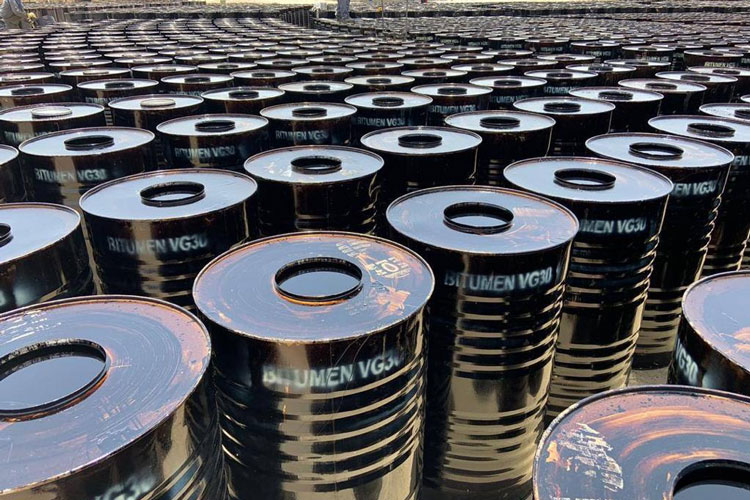Bitumen is one of the fundamental materials used in road construction and building industries, primarily utilized as a viscous binder. Among its various properties, viscosity plays a critical role in determining the performance and efficiency of bitumen. This article explores the nature of bitumen viscosity and its implications for diverse applications.
Viscosity Characteristics in Bituminous Materials
Viscosity is a key property of bituminous materials such as asphalt. It is defined as a fluid’s resistance to deformation or flow. In simpler terms, viscosity indicates how long it takes for a fluid to move from one location to another. In the case of bituminous substances, viscosity is generally high, meaning that these materials—which are often a blend of bitumen and other hydrocarbons like crude oil—exhibit a wide range of viscosities.
The viscosity of bituminous materials significantly affects their performance and application. For instance, high viscosity enhances resistance to heat and pressure, making it beneficial for applications such as pavement surfacing and protective coatings. However, excessively high viscosity can reduce flowability and hinder proper material distribution. Therefore, it is essential to carefully consider viscosity in the design and utilization of bituminous materials to maximize benefits and mitigate potential drawbacks.
Types of Viscosity Graded (VG) Bitumen
In the VG classification system or Viscosity Grade Bitumen, the number following “VG” indicates the viscosity value measured at 60°C. Additionally, the viscosity at 135°C is also determined to evaluate the bitumen’s performance at higher temperatures.
- VG 10 bitumen : Lowest Viscosity Among VG Grades.
- VG 20 bitumen : Slightly Stiffer Than VG-10.
- VG 30 bitumen : The most widely used grade in tropical countries such as Iran and India.
- VG 40 bitumen : The stiffest type of bitumen in this category.

Methods for Measuring Bitumen Viscosity
Viscosity is a critical performance parameter for bitumen, influencing its suitability across a variety of industries. It represents the material’s resistance to flow and deformation. Multiple testing methods and instruments are available for evaluating bitumen viscosity, each with distinct advantages and limitations.
One commonly used technique is the Brookfield method, which employs a Brookfield Viscometer. This device uses a rotating spindle immersed in bitumen to measure the material’s resistance to motion. The instrument provides digital readouts and is suitable for measuring viscosity across various temperature ranges.
Another method is the Saybolt Viscometer test, where the bitumen is heated in a vertical tube, and the time it takes to flow through a calibrated orifice is recorded. This time is then converted into viscosity units. This approach is particularly suitable for high-temperature bitumen and provides accurate readings, though it requires a well-equipped laboratory and more time and effort to execute.
|
Impact of Viscosity on Bitumen Performance and Application
Viscosity is a vital property that directly influences the performance and functionality of bitumen. It is affected by temperature, pressure, and the chemical composition of the bitumen. High viscosity can impair pumpability and flow, which may negatively affect bitumen performance in applications like asphalt concrete, road surfacing, and specialized asphaltic products.
Because viscosity significantly impacts bitumen behavior, controlling and adjusting this parameter is crucial for bitumen production and its derivatives. For example, in asphalt manufacturing, the viscosity of the binder must be fine-tuned to ensure it can be efficiently pumped and applied across a range of temperatures. To achieve this, various chemical additives are introduced to modify the viscosity and enhance the binder’s performance. Continued research on the relationship between viscosity and bitumen performance can lead to higher-quality bituminous products and improved efficiency.
Advantages and Disadvantages of Bitumen Viscosity
Viscosity is a defining factor in the adhesive and flow characteristics of bitumen. As a measure of internal resistance to flow, it is determined by both temperature and the chemical makeup of the bitumen. An appropriate viscosity level is essential for bitumen used in road construction, drilling, coating, and other industrial applications.
Among the advantages of high bitumen viscosity is increased adhesiveness and cohesiveness, which enable the material to bond effectively with various surfaces and maintain long-term durability. This makes it ideal for applications that require permanent, resistant coatings. On the downside, high viscosity can pose challenges such as poor compaction, reduced spreadability, higher energy consumption for heating, and increased production costs.
Overall, viscosity is a critical determinant of bitumen quality and application suitability. The ideal viscosity level depends on the specific application, and it must be carefully assessed. Using bitumen with the appropriate viscosity offers both benefits and trade-offs, and a thorough evaluation is required prior to use to ensure optimal performance.
Solutions for Improving Bitumen Viscosity
Viscosity management is a major concern in industries such as road construction and civil engineering. Since viscosity represents a material’s resistance to flow and deformation, it has a direct impact on the durability and effectiveness of bituminous products.
One of the main strategies for improving bitumen viscosity is the use of chemical additives. These substances can reduce viscosity to a manageable level, thereby improving the material’s overall performance. Additionally, such additives may enhance the mechanical and thermal properties of bitumen and prevent viscosity degradation over time. Depending on the formulation, additives can adjust viscosity either temporarily or permanently to achieve the desired specifications.
Beyond chemical additives, various technological improvement—including mechanical blending and thermal conditioning—can be applied to adjust viscosity. For example, applying heat and pressure can lower bitumen viscosity, facilitating easier handling. Likewise, introducing special compounds can enhance viscosity characteristics. In general, combining advanced technologies with appropriate additives leads to improved viscosity control, thereby enhancing product quality and service life.
Conclusion
Viscosity is one of the most important properties of bitumen, with significant implications for its performance and efficiency in a range of industrial applications. Accurate assessment and control of bitumen viscosity are essential for optimizing its use. Selecting suitable measurement techniques, applying effective improvement methods, and understanding the influence of viscosity on material behavior are all critical to achieving optimal outcomes in bitumen applications.


